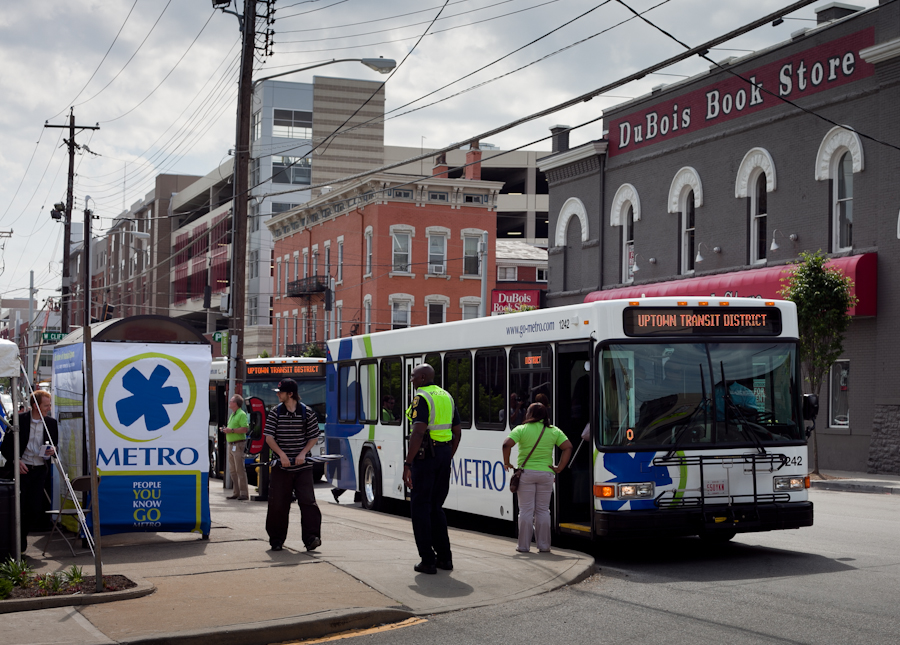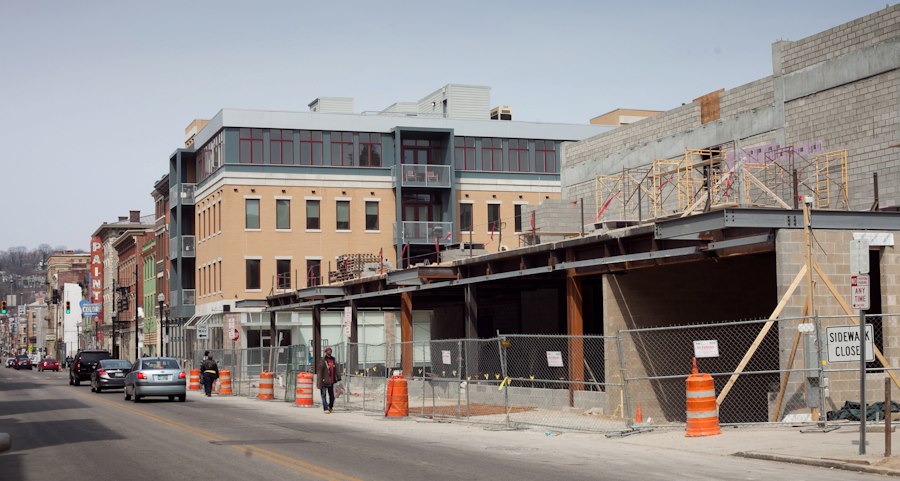Southwest Ohio Regional Transit Authority (SORTA) officials were joined by community members and political leaders from the City of Cincinnati this morning in Clifton Heights to celebrate the groundbreaking for the $6.9 million Uptown Transit District.
The Uptown Transit District, once complete by the end of 2013, will create a secondary hub for Metro bus service, and will allow the bus agency to continue to move away from its long-used ‘Spoke and Hub’ system that fed all routes to the Government Square Transit Center in the Central Business District.
Metro officials say that new routes, including the agency’s new Metro*Plus service, will utilize the new uptown transit hubs. Additionally, direct service from Metro’s Glenway Crossing Transit Center will be able to take advantage of the new facilities.
Transit officials believe the Uptown Transit District will be a critical improvement for the regional bus network, allowing more direct and better access to the region’s second largest employment center.
“It is a wonderful concept and I’m so pleased that Metro is undertaking this because we really need it,” explained Cincinnati City Councilmember Wendell Young (D). “Uptown is a very important economic engine in this city, with 50,000-plus jobs up here.”
The Uptown Transit District will include four distinct bus hubs throughout the area including the Clifton Heights Business District at Calhoun Street and Corbett Drive, Vine Street between Calhoun and McMillan Streets, Jefferson Street at University Avenue, and the Medical Center Area.
The stations will include enhanced shelters and will also include real-time arrival information.
“We’ll have informational kiosks that will provide real-time information…so therefore you know exactly when you can embark upon your destination,” Terry Garcia Crews, CEO of Metro, told the crowd at the ceremony. “We want to make sure that we’re designing a system that meets the needs of our consumers.”
Construction was originally anticipated to begin in April 2013. Approximately 72% of the funding was provided by the Federal Government with the remainder coming from the City of Cincinnati, Metro and the OKI Regional Council of Governments.


